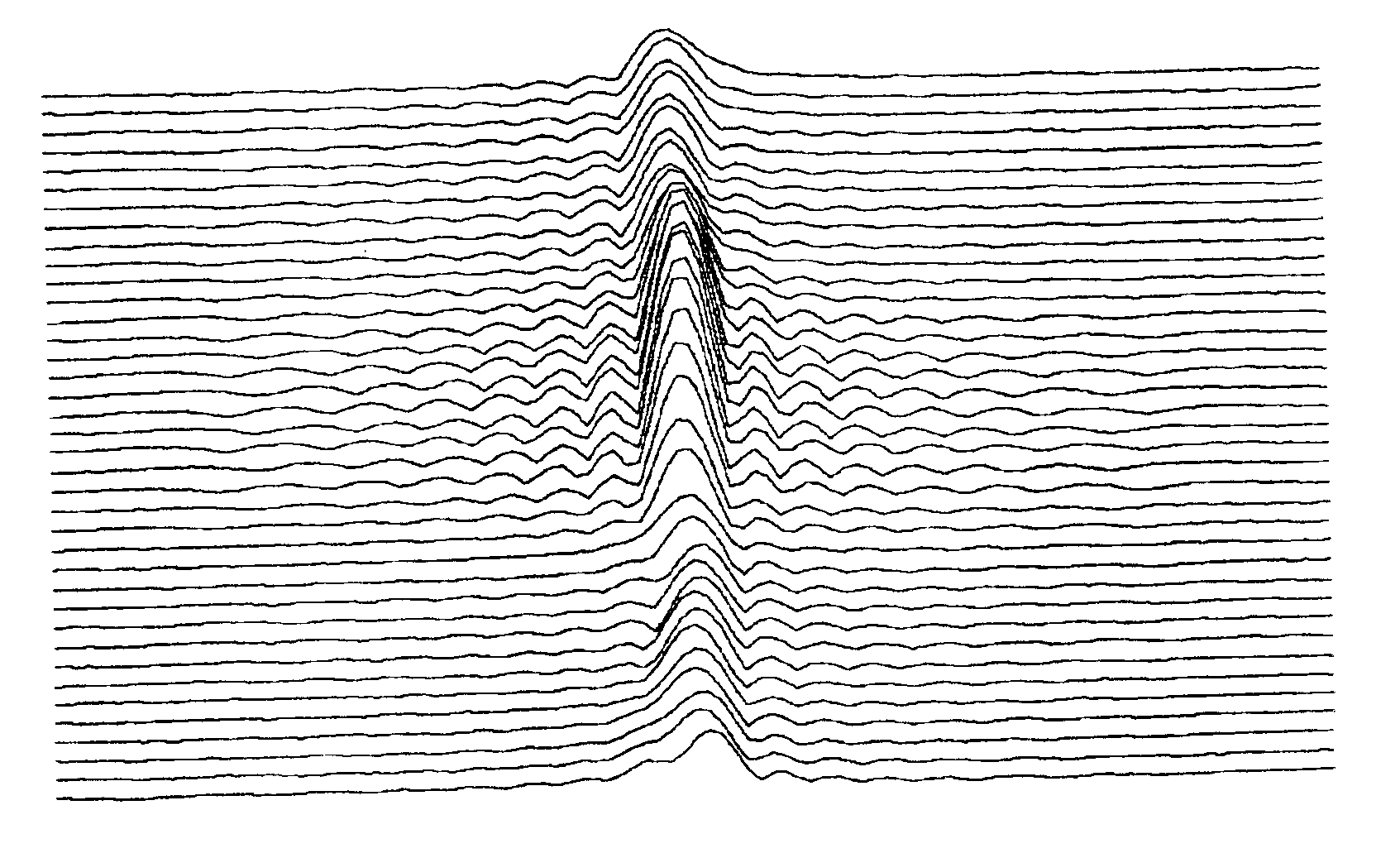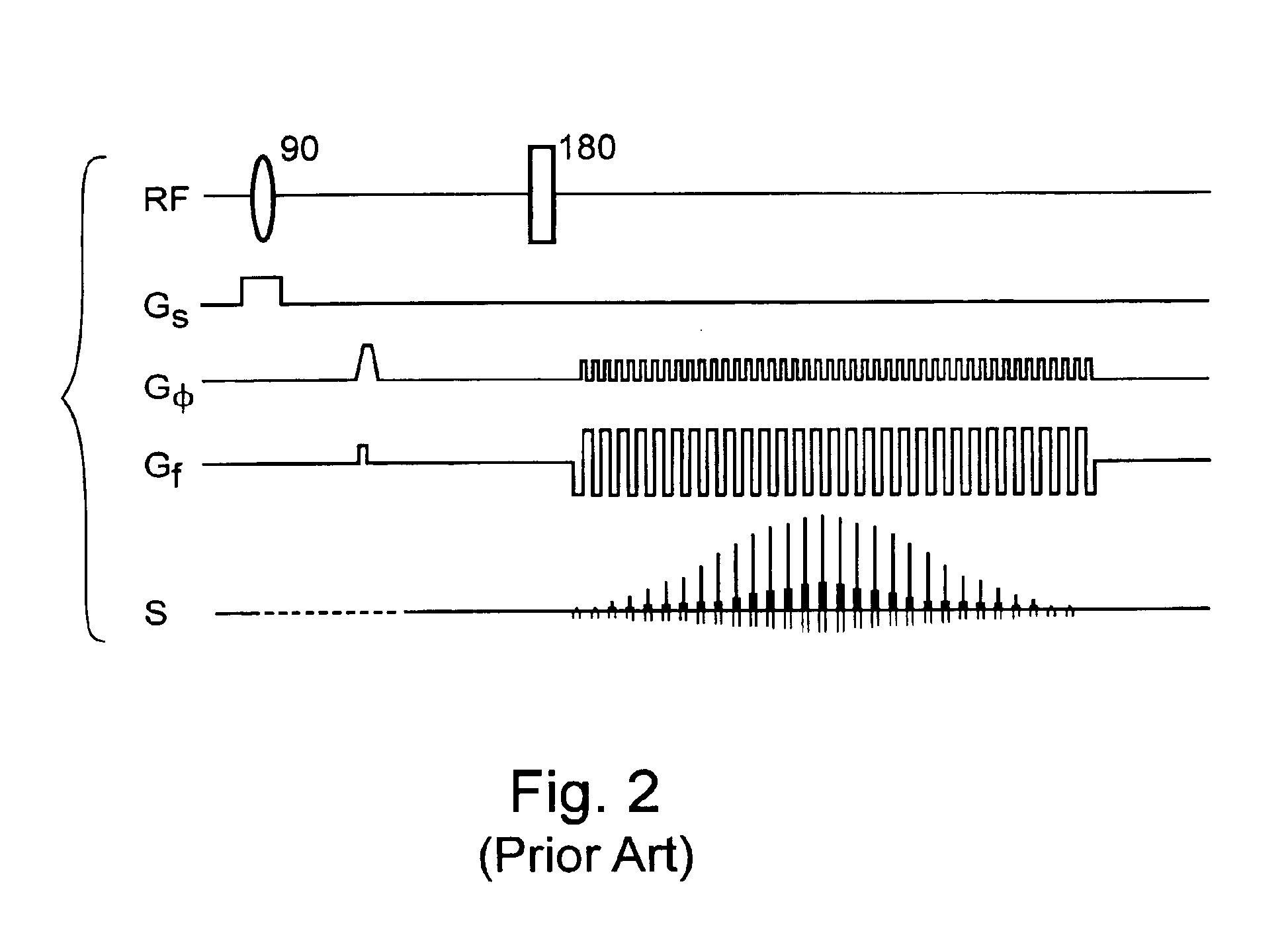Sequence preconditioning for ultra-fast magnetic resonance imaging
- Summary
- Abstract
- Description
- Claims
- Application Information
AI Technical Summary
Benefits of technology
Problems solved by technology
Method used
Image
Examples
Embodiment Construction
[0038]An ill-conditioned EPI sequence can be characterized by the following three diagnostic parameters: (1) A collective deviation of the echo centers from the ideal position by Δ; (2) A relative collective shift of the even-echo centers from the odd-echo centers by δ; and (3) A collective linear drift of the echo centers in an amount of σ per echo. Echo-centers are measured after time reversal of all the even-echoes. Thus the echo-centers of an EPI data set can be represented by:
Ci=C0+Δ+(i%2)*δ+i*σ
where i=0,1,2, . . . , N−1 and stands for the index of the EPI echoes, thus odd echoes are associated with even i numbers and even echoes with odd i numbers; Ci is the echo center position of (i+1)th echo; C0 is the ideal echo center position; (i%2) return 0 for odd-echoes and 1 for even-echoes.
[0039]There can also be defined three sequence-conditioning parameters to correspond to the above-defined diagnostic parameters: (1) a mistuning of the first EPI echo by the amount of ΔM in gradie...
PUM
 Login to View More
Login to View More Abstract
Description
Claims
Application Information
 Login to View More
Login to View More - R&D
- Intellectual Property
- Life Sciences
- Materials
- Tech Scout
- Unparalleled Data Quality
- Higher Quality Content
- 60% Fewer Hallucinations
Browse by: Latest US Patents, China's latest patents, Technical Efficacy Thesaurus, Application Domain, Technology Topic, Popular Technical Reports.
© 2025 PatSnap. All rights reserved.Legal|Privacy policy|Modern Slavery Act Transparency Statement|Sitemap|About US| Contact US: help@patsnap.com



